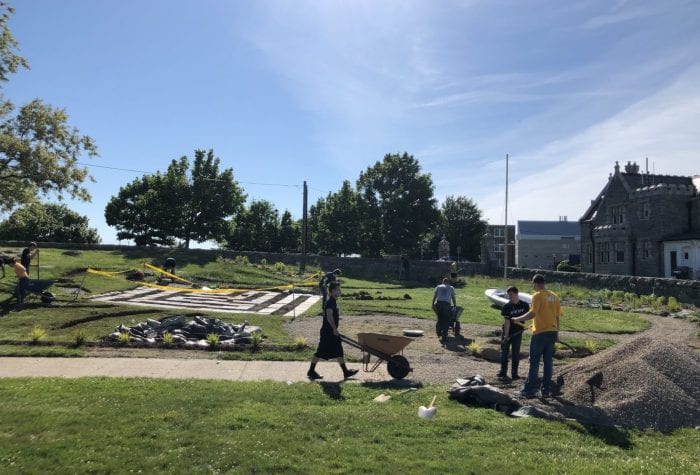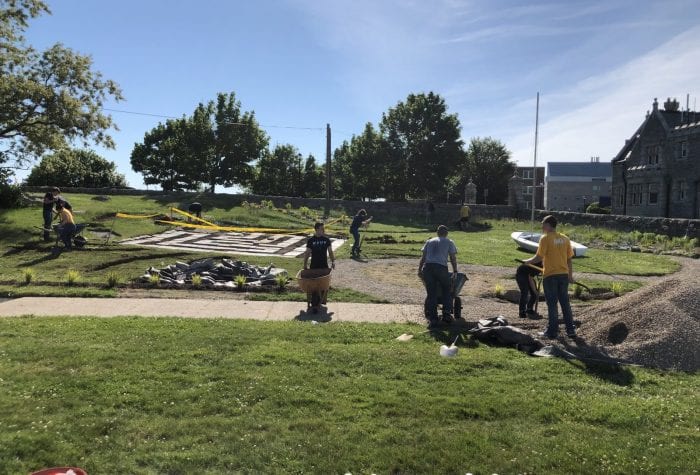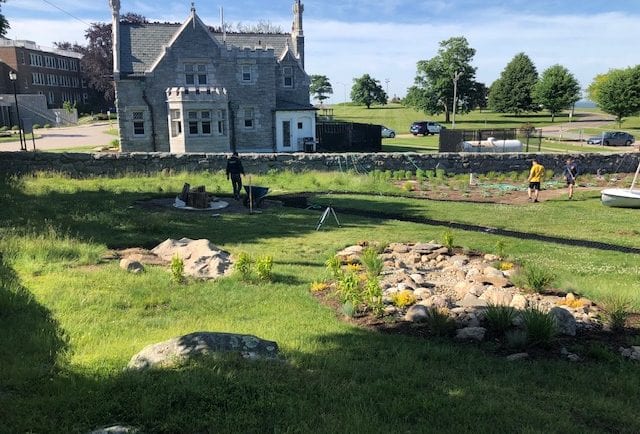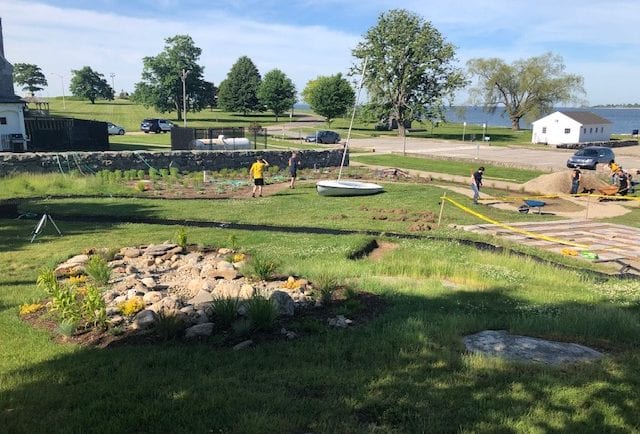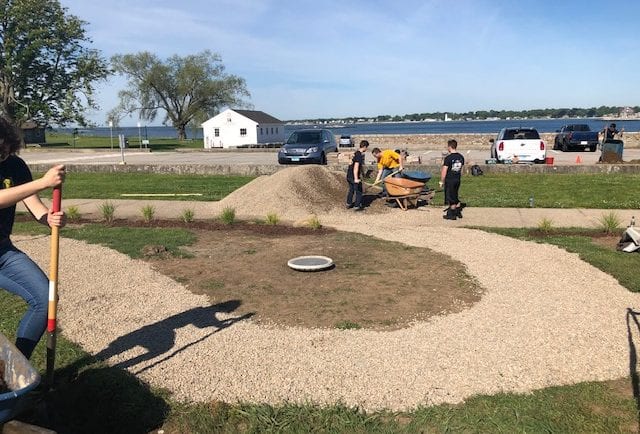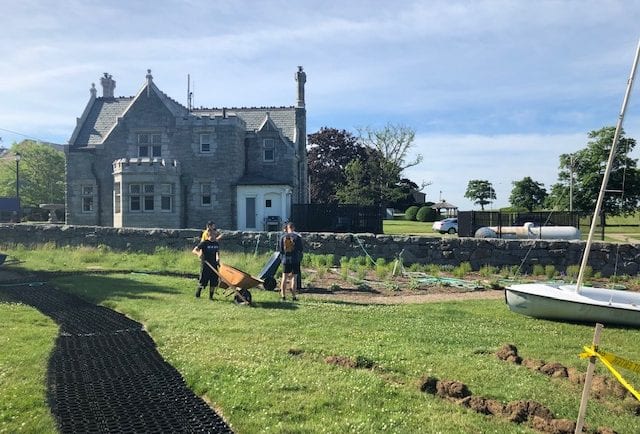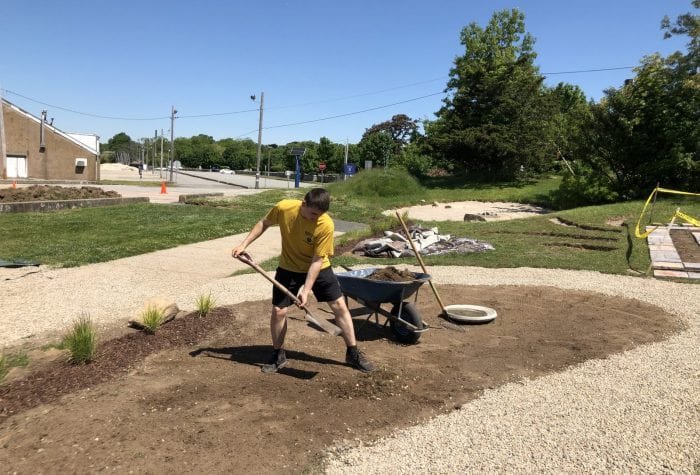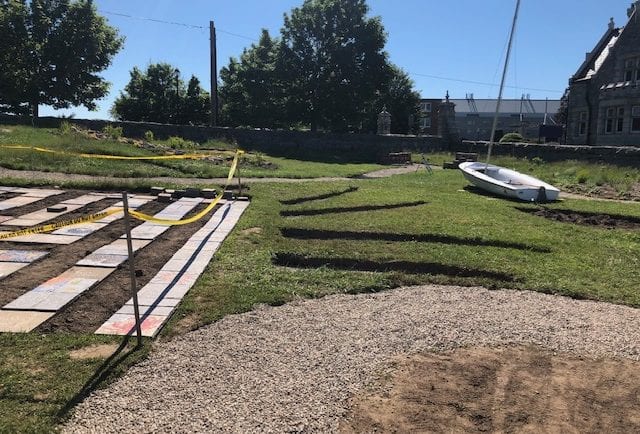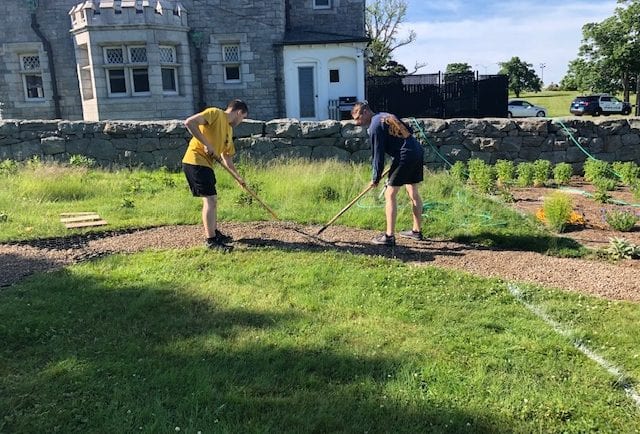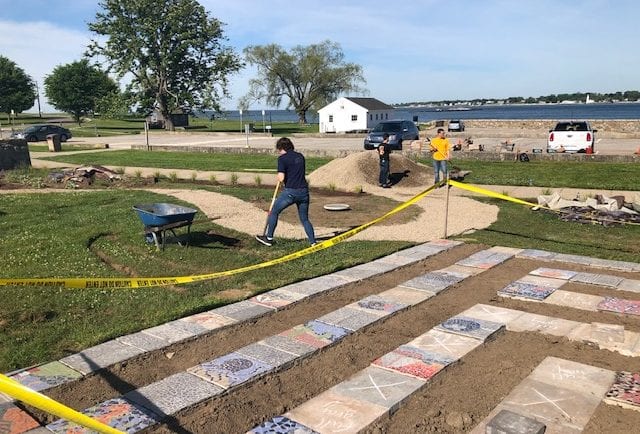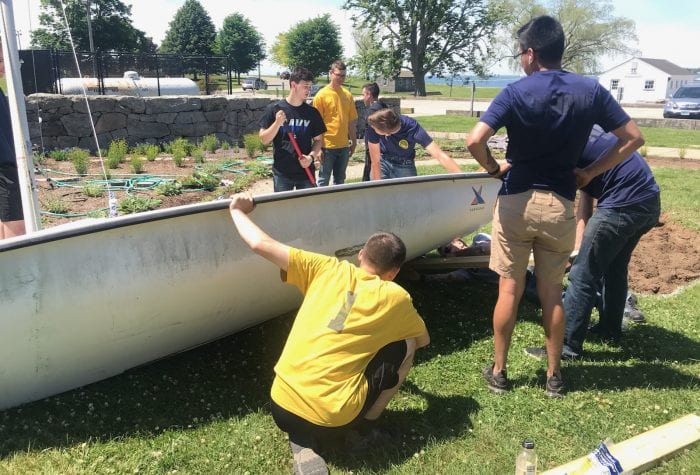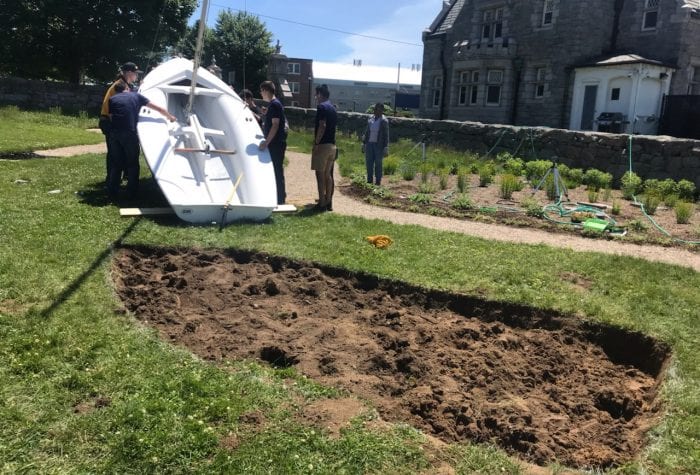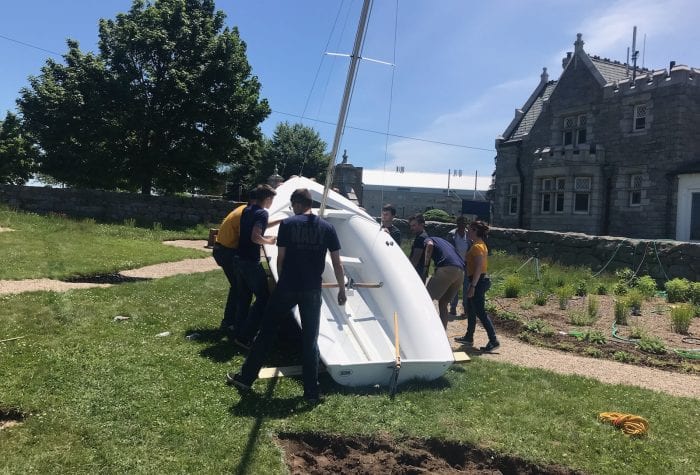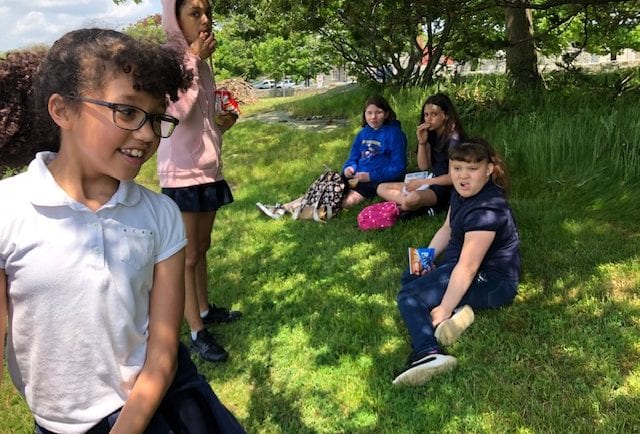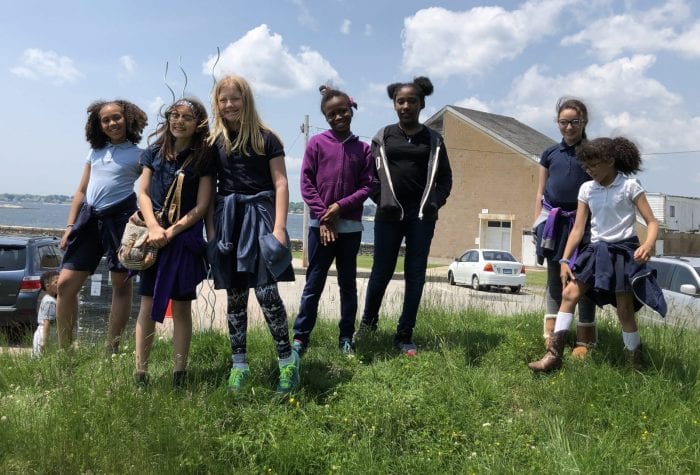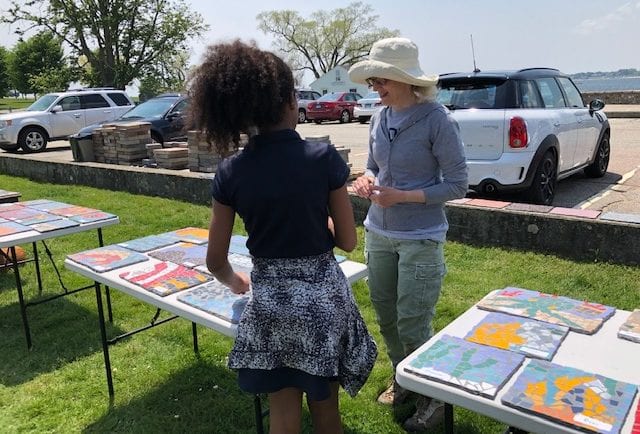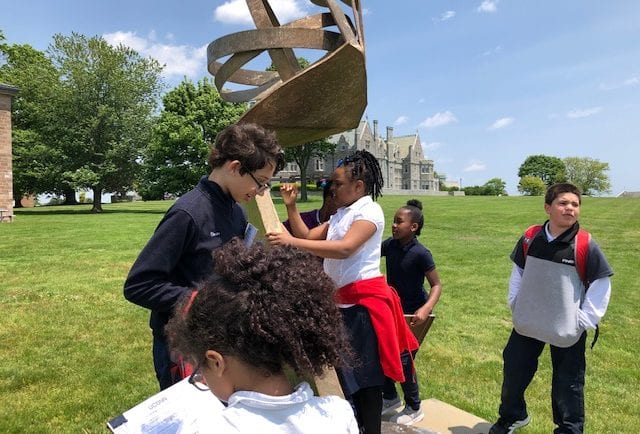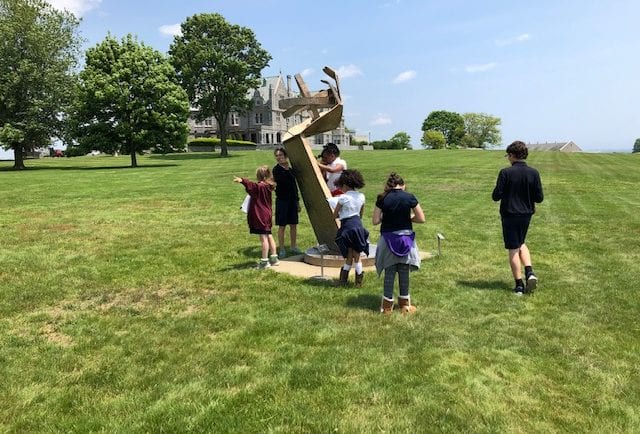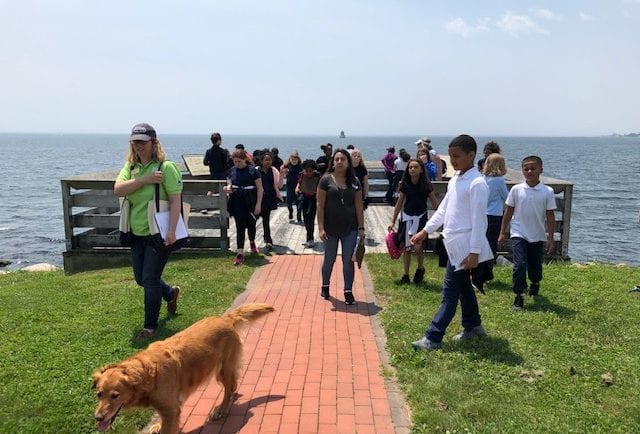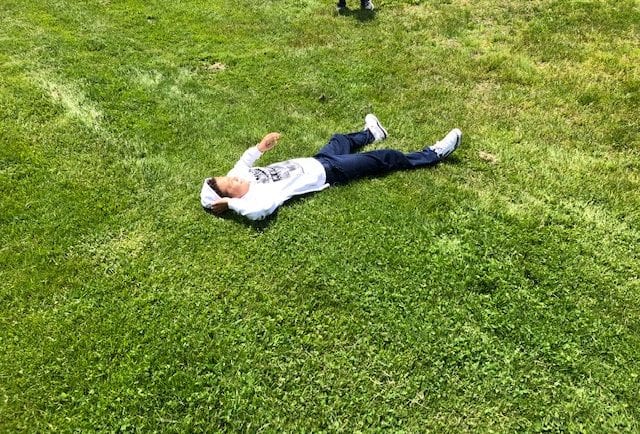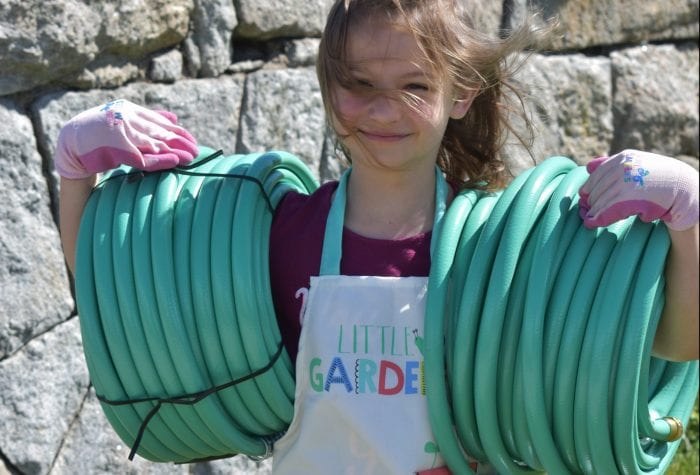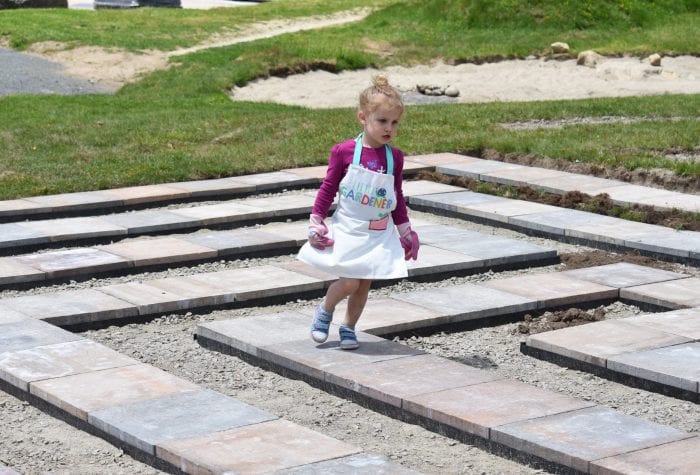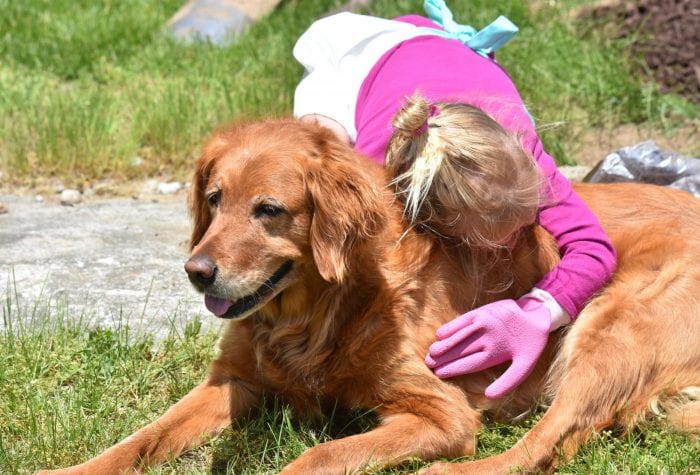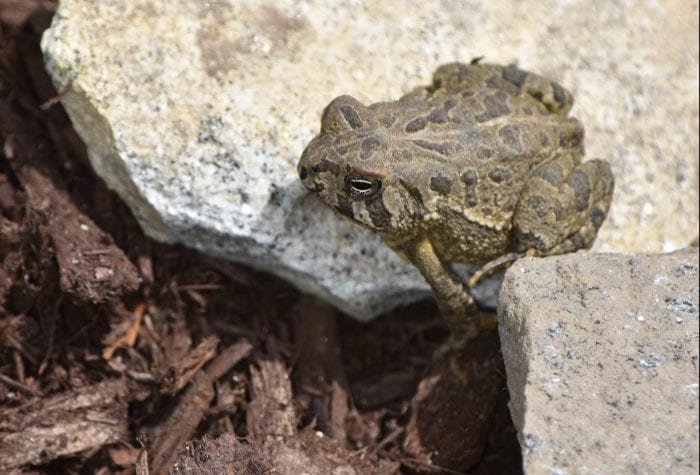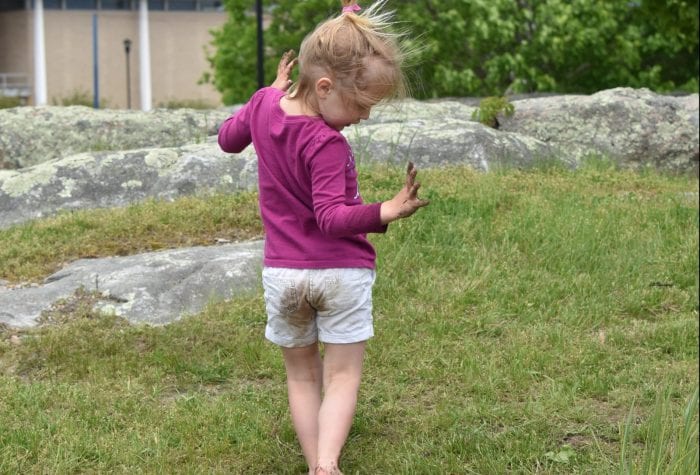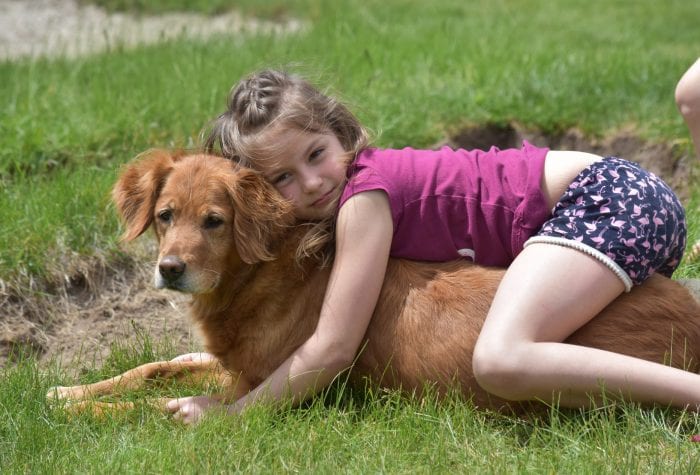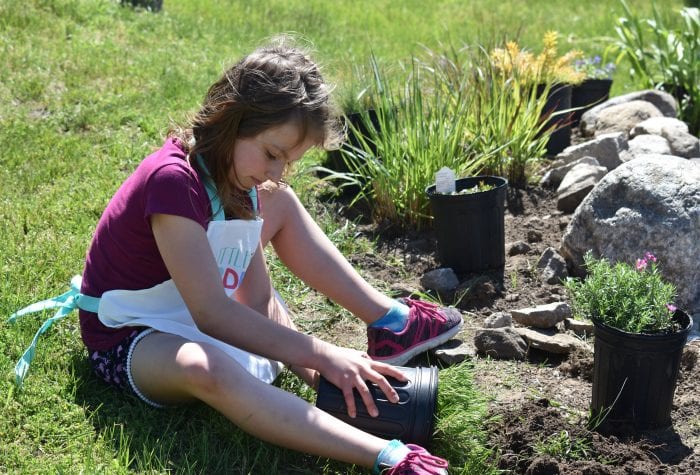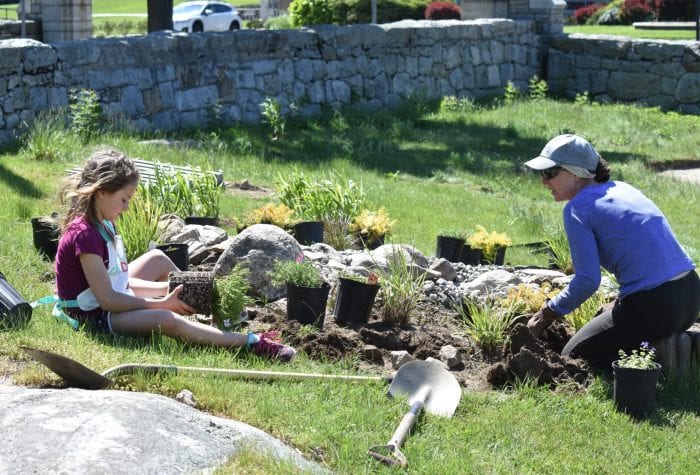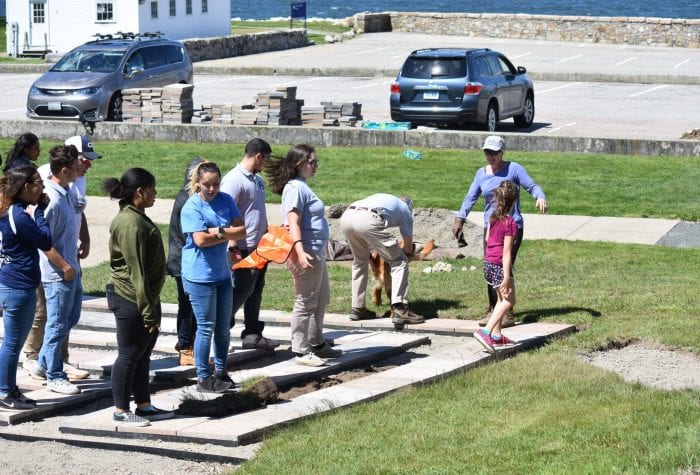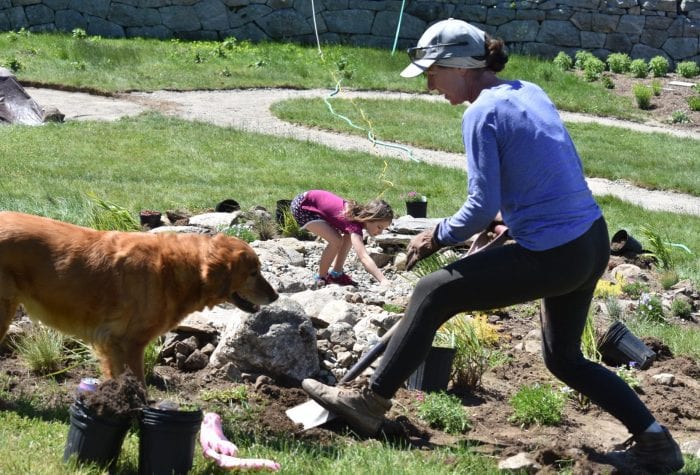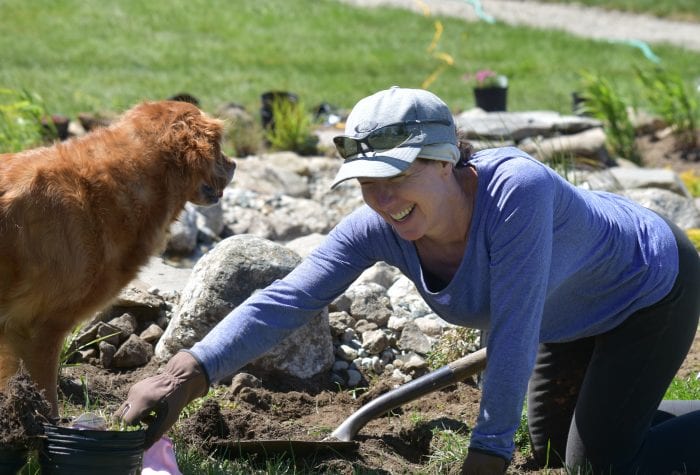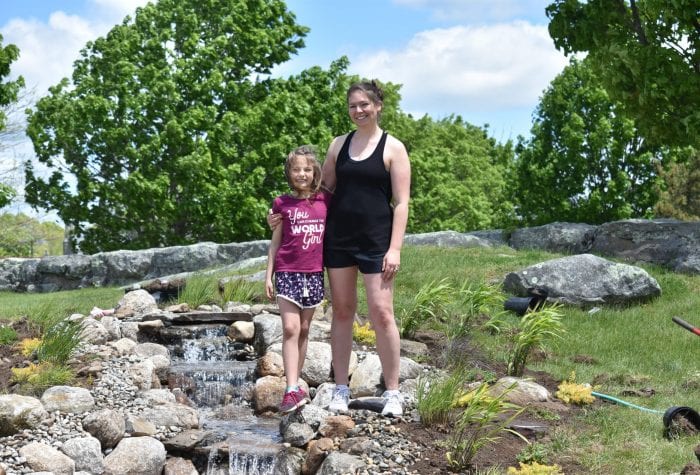We are so fortunate to have not only the U.S. Coast Guard Academy in our community but also the U.S. Naval Submarine Base. Both of these organizations have a strong belief in volunteerism and are willing to help with community projects. In fact, they are really busy volunteering most weekends so I was delighted when they were able to help us on a Saturday. Unfortunately, that was the weekend I was committed to the New London Family Festival but Mary rearranged her schedule and Shannon Aiello came to help.
We had received a donation of TruGrid Eco Pavers to make our pathways handicap accessible and to help with drainage and migration of stone. These are honeycomb-shaped 4’x4’ plastic grids that Mary’s son Jacob, our fabulous foreman, was able to install. This was a little tricky because of the many curves in the pathway and the cutting involved, but he completed the whole thing the day before the sailors came. The company TrueGrid is so great not only for the donation but also for the support in figuring out the linear footage with all the curves and advising on other questions. The founder sent me a personal message telling me that he loved this project’s mission to get kids in nature, saying that he has young children of his own so he “gets it.” Yay!
The sailors who helped (and will be pitching in again to help us get concrete into the crab labyrinth’s claws and legs) are students at the submarine school. I was able to meet them at the garden before the festival, giving them a tour and showing them the things we needed to get done. They were super hard workers and immediately got to work filling in the main pathway with beautiful brown half-inch stone donated by McClure Construction. A sincere thanks to Gene McClure as well for his generosity of spirit. I am always humbled when I request a donation and companies give so freely. I know they are mostly small businesses and this takes from their bottom line, so my admiration for their generosity is heartfelt.
The sailors did quick work of the projects. They worked so hard and fast! They also helped us problem-solve with their myriad of expertise. They brought ingenuity to the table in helping us stabilize the sailboat and put in steps at the top of the labyrinth. Their strength will be an asset this week as they haul heavy concrete. It just amazes me that we have these local assets to help. Help from groups of volunteers like the Coast Guard and Navy, as well as Pfizer and the Boy Scouts, make such quick work of huge, overwhelming projects. Tasks that would have taken us weeks to accomplish are finished in three hours. That absolutely blows me away.
I really think the universe smiles at things like this. It knows the power of people working together for the common good and the fulfillment we all get from it. It shouldn’t come as a shock to me, but it does, mostly because I don’t take the time to consider such a thing. But people helping people benefits everyone involved. Knowing you are doing something good for the world, the community, or even a single person, and doing it with others as a team is such a feel-good thing! As the recipient of that good, I feel great! And for that, I shout out a resounding, “Go Navy!”
